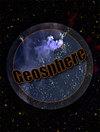评估活动断层作图预测地震地表破裂位置的效果
IF 1.7
3区 地球科学
Q3 GEOSCIENCES, MULTIDISCIPLINARY
引用次数: 2
摘要
地震表面断层破裂位置的不确定性是断层位移危险性分析的关键因素,并为危险和风险缓解策略提供信息。地质学家通常根据遥感数据集解释的地貌,通过断层测绘来预测未来的断裂位置。然而,地表过程可能会模糊断层位置,断层痕迹可能被错误地映射,未来的破裂可能不会破坏每个断层痕迹。我们评估了基于地貌学的断层测绘对七次地震的地表破裂预测效果:1983年M 6.9 Borah Peak、2004年M 6.0 Parkfield、2010年M 7.2 El Mayor–Cucapah、2011年M 6.7 Fukushima Hamadori、2014年M 6.0 South Napa、2016年M 7.8 Kaikoura和2016年M 7 Kumamoto。我们训练地学学生使用地震前获得的地形和图像绘制活动断层图。一位地质专业人员绘制了一张“控制”图。测绘人员使用了一种新的“地貌指标排名”方法,根据地貌对断层置信度进行排名。我们通过将断层图与已发布的断裂图进行比较来确定绘制断层图的准确性。我们将预测断裂定义为断层附近的断裂(50-200米,取决于断层置信度),该断裂以类似于断层的方式与景观相互作用。绘制的断层预测了所研究地震主破裂长度的12%至68%。预测断裂与强、明显或弱断层之间的中间分隔距离为15-30m。我们的工作强调,绘制未来断层断裂是断层位移危险分析的一个未被充分重视的挑战,即使对专家来说也是如此,这对风险管理、工程现场评估和断层禁区都有影响。本文章由计算机程序翻译,如有差异,请以英文原文为准。
Evaluating how well active fault mapping predicts earthquake surface-rupture locations
Earthquake surface-fault rupture location uncertainty is a key factor in fault displacement hazard analysis and informs hazard and risk mitigation strategies. Geologists often predict future rupture locations from fault mapping based on the geomorphology interpreted from remote-sensing data sets. However, surface processes can obscure fault location, fault traces may be mapped in error, and a future rupture may not break every fault trace. We assessed how well geomorphology-based fault mapping predicted surface ruptures for seven earthquakes: 1983 M 6.9 Borah Peak, 2004 M 6.0 Parkfield, 2010 M 7.2 El Mayor–Cucapah, 2011 M 6.7 Fukushima-Hamadori, 2014 M 6.0 South Napa, 2016 M 7.8 Kaikoura, and 2016 M 7 Kumamoto. We trained geoscience students to produce active fault maps using topography and imagery acquired before the earthquakes. A geologic professional completed a “control” map. Mappers used a new “geomorphic indicator ranking” approach to rank fault confidence based on geomorphologic landforms. We determined the accuracy of the mapped faults by comparing the fault maps to published rupture maps. We defined predicted ruptures as ruptures near a fault (50–200 m, depending on the fault confidence) that interacted with the landscape in a similar way to the fault. The mapped faults predicted between 12% to 68% of the principal rupture length for the studied earthquakes. The median separation distances between predicted ruptures and strong, distinct, or weak faults were 15–30 m. Our work highlights that mapping future fault ruptures is an underappreciated challenge of fault displacement hazard analysis—even for experts—with implications for risk management, engineering site assessments, and fault exclusion zones.
求助全文
通过发布文献求助,成功后即可免费获取论文全文。
去求助
来源期刊

Geosphere
地学-地球科学综合
CiteScore
4.40
自引率
12.00%
发文量
71
审稿时长
6-12 weeks
期刊介绍:
Geosphere is GSA''s ambitious, online-only publication that addresses the growing need for timely publication of research results, data, software, and educational developments in ways that cannot be addressed by traditional formats. The journal''s rigorously peer-reviewed, high-quality research papers target an international audience in all geoscience fields. Its innovative format encourages extensive use of color, animations, interactivity, and oversize figures (maps, cross sections, etc.), and provides easy access to resources such as GIS databases, data archives, and modeling results. Geosphere''s broad scope and variety of contributions is a refreshing addition to traditional journals.
 求助内容:
求助内容: 应助结果提醒方式:
应助结果提醒方式:


